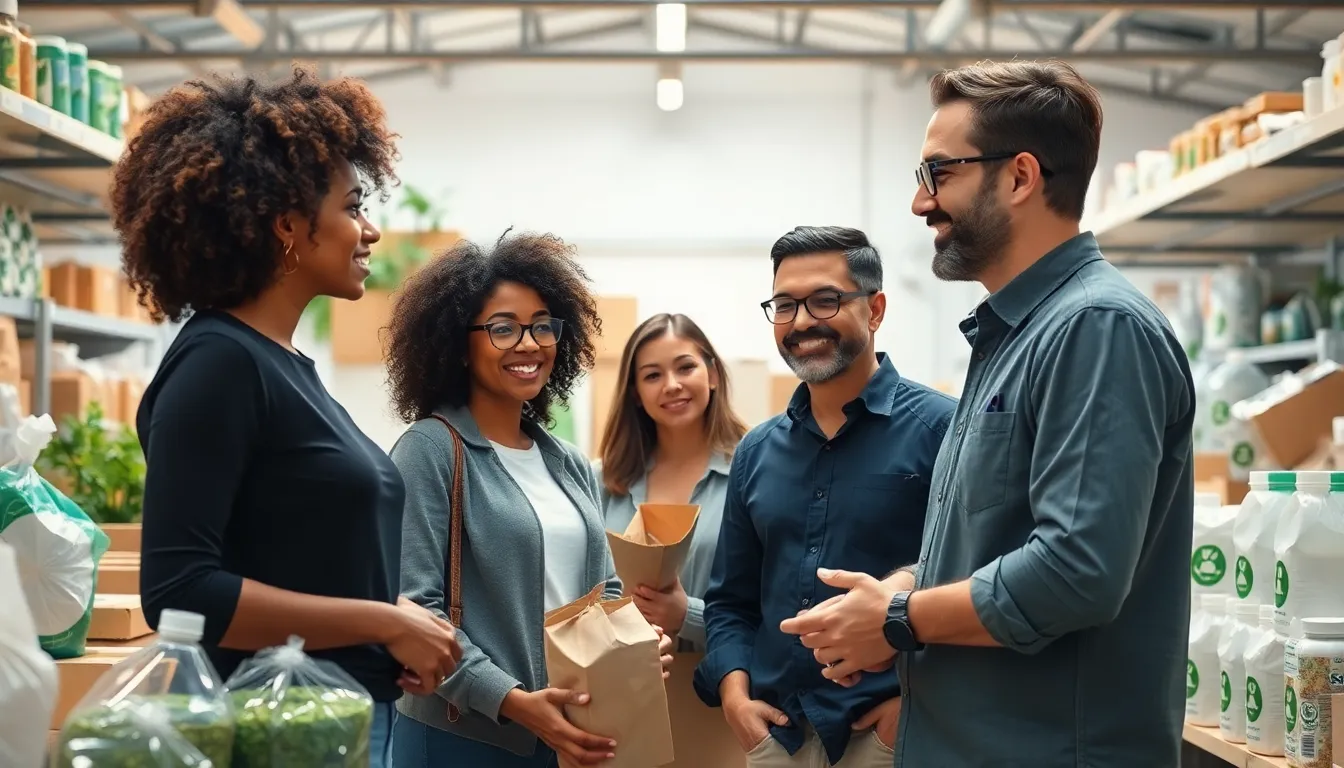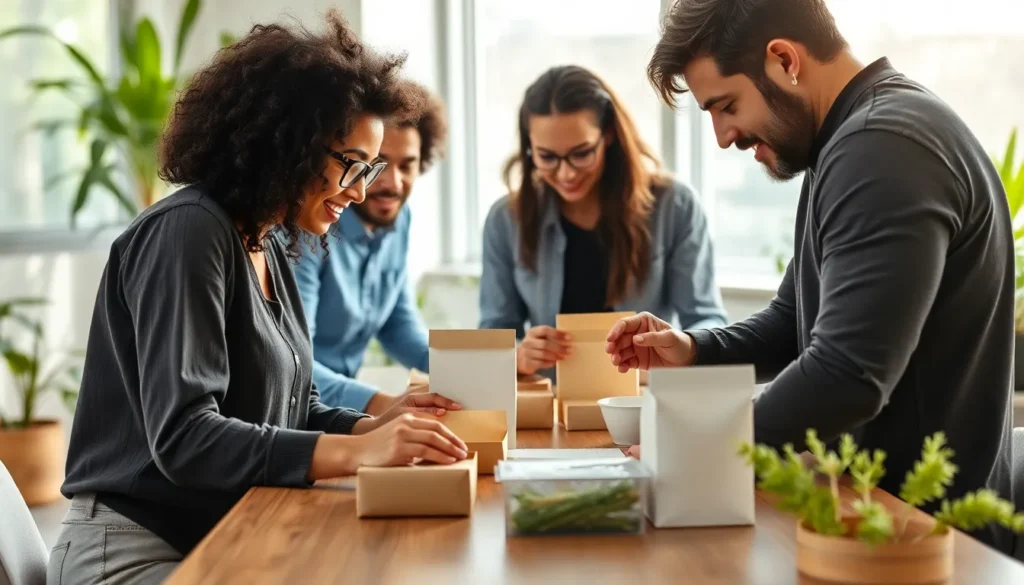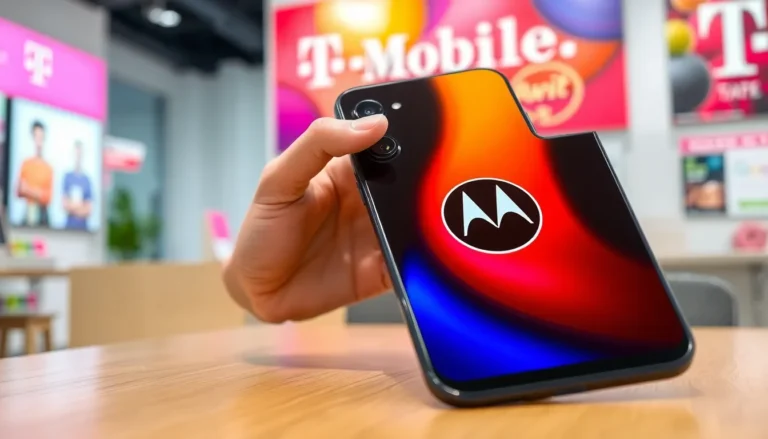In a world drowning in plastic, sustainable packaging technology is like a superhero swooping in to save the day. It’s not just about looking good on the shelf; it’s about protecting the planet while keeping products safe and sound. Imagine a world where your favorite snacks come in packaging that’s as eco-friendly as your yoga mat. Sounds dreamy, right?
Table of Contents
ToggleOverview of Sustainable Packaging Technology
Sustainable packaging technology focuses on innovative solutions that reduce environmental impact. Materials like biodegradable polymers and recycled content significantly lower waste. Companies increasingly adopt packaging made from plant-based sources, which helps minimize reliance on fossil fuels.
Additionally, advances in smart packaging improve efficiency and product tracking. These technologies enhance shelf life, which reduces food waste. Packaging solutions now often incorporate water-based inks and adhesives, making them safer for the environment.
Innovative designs also contribute to sustainability. Companies emphasize minimalistic approaches, reducing excess materials and making recycling easier. Environmental certification programs support transparency, allowing consumers to choose products that meet sustainable standards.
Statistics show that nearly 75% of global consumers prefer brands that commit to sustainability. This trend has spurred investment in research and development of eco-friendly packaging options. These developments promote greater corporate responsibility and drive market demand for greener alternatives.
Partnerships between companies and recycling facilities improve the circular economy. Collaborative efforts ensure that materials recycle effectively, closing the loop on packaging waste. Sustainable packaging technology not only serves businesses but also fosters a healthier planet for future generations.
Innovations Driving Sustainable Packaging

Innovations in sustainable packaging focus on reducing environmental impact while enhancing consumer experiences. Companies increasingly prioritize eco-friendly solutions to meet growing consumer demand.
Biodegradable Materials
Biodegradable materials break down naturally over time, reducing landfill waste. Many brands now utilize substances like cornstarch and mushroom mycelium to create eco-friendly alternatives. Consumers appreciate these materials for their ability to decompose and minimize pollution. Research indicates that the global biodegradable plastics market is projected to reach $6.89 billion by 2026. Such growth highlights the urgency of adopting alternative materials in packaging.
Recycled Content in Packaging
Recycled content plays a significant role in sustainable packaging by repurposing materials that would otherwise contribute to waste. Companies increasingly incorporate post-consumer recycled content into their packaging, offering benefits in both sustainability and cost-effectiveness. Statistics show that recycling helps reduce greenhouse gas emissions by approximately 1.1 billion tons annually. With consumers showing strong preference for products with recycled content, many brands are investing more heavily in this area. The commitment to using recycled materials supports the circular economy, promoting resource efficiency.
Benefits of Sustainable Packaging Technology
Sustainable packaging technology offers significant advantages in various aspects, particularly environmental impact and cost efficiency.
Environmental Impact
Sustainable packaging reduces pollution and minimizes waste. Biodegradable materials like cornstarch and mushroom mycelium break down naturally, decreasing landfill accumulation. Recycling materials in packaging can lessen greenhouse gas emissions, with an annual reduction of approximately 1.1 billion tons projected. Plant-based packaging decreases reliance on fossil fuels, aligning with global consumer preferences, as nearly 75% of consumers favor brands committed to sustainability. Utilizing water-based inks and adhesives enhances safety for the environment, ensuring that packaging contributes positively during and after its lifecycle.
Cost Efficiency
Investing in sustainable packaging often leads to long-term savings for companies. By adopting post-consumer recycled content, businesses lower raw material costs while promoting recycling. Waste reduction initiatives, such as smart packaging technology, enhance product shelf life, ultimately decreasing costs tied to unsold inventory. Research indicates that companies focused on sustainable practices attract more investments, driven by consumer preference for eco-friendly products. Embracing minimalist design not only cuts production costs but also simplifies the recycling process, further benefiting companies financially.
Challenges in Adoption
Challenges persist in the widespread adoption of sustainable packaging technology. These hurdles include industry resistance and consumer awareness.
Industry Resistance
Industry resistance affects the transition to sustainable packaging materials. Many companies cling to traditional materials due to familiarity and existing supply chains. Financial concerns play a significant role; initial investments in eco-friendly alternatives often deter businesses. Moreover, the lack of standardized regulations can complicate compliance for packaging suppliers. Significant challenges arise when companies prioritize short-term cost savings over long-term sustainability goals. As a result, a gap between innovation and implementation continues to hinder progress.
Consumer Awareness
Consumer awareness significantly impacts the effective use of sustainable packaging. A limited understanding of the benefits of eco-friendly materials contributes to slow adoption. Many consumers remain unaware of environmental implications associated with conventional packaging options, including pollution and waste. When consumers gain knowledge, they often favor brands committed to sustainability, which incentivizes companies to adapt. Educating the public through campaigns can enhance awareness and influence purchasing decisions. Increased transparency about materials used also cultivates trust in brands, driving demand for sustainable solutions.
Future Trends in Sustainable Packaging Technology
Emerging trends indicate a strong shift towards innovative materials in sustainable packaging. Biodegradable options like cornstarch and mushroom mycelium break down naturally, aligning with the urgent need to reduce landfill waste. The global biodegradable plastics market is set to reach $6.89 billion by 2026, showcasing significant growth in this area.
Advances in smart packaging technology enhance efficiency and extend product shelf life. Companies are increasingly incorporating post-consumer recycled content into their packaging, combining sustainability with cost-effectiveness. Recycling efforts contribute to a reduction of approximately 1.1 billion tons of greenhouse gas emissions each year, emphasizing the positive environmental impact of effective recycling systems.
Design trends prioritize minimalism, reducing excess materials and facilitating easier recycling. Nearly 75% of global consumers actively prefer brands that emphasize sustainability, driving companies to invest more in eco-friendly packaging solutions. Partnerships between businesses and recycling facilities bolster the circular economy, ensuring that recyclable materials are effectively managed.
Consumer education plays a crucial role in shaping these trends. Limited awareness regarding the benefits of sustainable materials constrains rapid adoption. When consumers understand the environmental implications of traditional packaging, their preference for sustainable options grows, prompting brands to adapt accordingly.
Overall, the future of sustainable packaging technology lies in continuous innovation, consumer awareness, and industry collaboration. Focusing on these areas will propel the transition towards a greener, more sustainable packaging landscape.
Sustainable packaging technology represents a pivotal shift in how products are presented and perceived. As companies increasingly embrace eco-friendly materials and innovative designs, they not only meet consumer demand but also contribute to a healthier planet. The collaboration between businesses and recycling facilities fosters a circular economy that enhances sustainability efforts.
While challenges remain in the widespread adoption of these technologies, the growing awareness among consumers is a driving force for change. As education and transparency improve, brands that prioritize sustainability will likely thrive in a competitive market. The future of packaging is bright and green, with continuous innovation paving the way for a more sustainable lifestyle.




